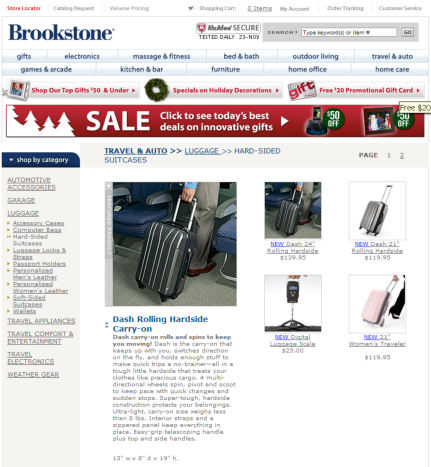New Tricks for Stimulating Organic Search Results
When it comes to customer acquisition, nothing is cheaper for online merchants than organic search. Thanks to powerful search engines like Google, etailers can easily attract new customers who are already interested in certain product categories, at zero variable expense.
Studies show that consumers’ eyes go to organic listings three times more often than to paid search results. So the trick is figuring out how to improve natural rankings, to ensure that yours is among the top half-dozen listed.
As search engine marketing evolved over the last 10 years or so, typical optimization techniques focused on two areas: a) page architectural improvements that make it easier for spiders to roam around and find your content, and b) writing keywords into product copy, title tags and meta tags, to attract spiders but still avoid being blacklisted by the search engine.
Beyond that, it has been fairly difficult to improve organic search rankings, since search engines are dedicated to avoiding manipulation on the part of advertisers. But a few new techniques have emerged.
1. Launch a blog. Etailers have quickly learned the power of blogging in natural search. A well-maintained blog, with frequent posts and useful content, attracts spiders. For some examples, have a look at
- Muttopolis, a pet store who’s blog features videos of cute doggie product usage, like a dog “testing” squeaky toys and giving a barking opinion about his favorites. The blog share tips for animal owners (called “pet parents”) and introduces new products.
- Garmin International, a GPS products company, runs a blog to attract fans of “geocaching,” a treasure hunt game based on GPS technology. Fans enjoy swapping information and stories about satellite technology.
Blogging does require resources, of course. Although some good blog software is free (example: Blogger, from Google), someone needs to be assigned the task of posting interesting stories and keeping the blog refreshed. Muttopolis figures it spends about $500 a month in staff time to maintain their blog.
Etailers with niche products and a tight circle of devoted fans are most likely to gain benefit from blogging.
2. Keep a close eye on Google. The search giant now enjoys 77% of the U.S. search advertising spend, and 62% of the searches. As its dominance increases and the company bears more scrutiny, Google has begun to share more information about how its fabled algorithms work. In the last few months, Google has revealed more about how it calculates the Quality Score that determines search ad rankings, and it is providing tips on how to fine-tune a retail site to rank higher. Most of Google’s efforts are designed to help manage paid ads, but the results can also be applied to optimization.
3. Expand beyond product content. Adding informational content, such as buyer guides and how-to pages, has been shown to improve natural search rankings.
4. Increase quantity and quality of links. Generating links to other websites does not come easily to merchants, whose primary job is promoting products. But there are some workarounds, like adding “breadcrumbs,” or a navigational trail at the top of the page that shows where a visitor has come from, and creates a natural interlinking that mimics links to other sites.
5. Invest for the long haul. Compared to paid search advertising, where you can run a campaign, do some testing, and read the results quickly using a variety of available tools, search engine optimization is only measurable over time. But given its relatively low cost, optimization represents arguably the first investment etailers should make in the search arena. Just keep in mind that the rules change rapidly, so constant attention and vigilance are required.

Brookstone uses “breadcrumbs” to let shoppers navigate back and forth easily, while at the same time gaining the natural search advantage of offering more links.
The latest techniques in paid search for etailers
Two new strategies for improving the results of paid search
1. Synchronize search campaigns with warehouse inventory. Merchants are realizing that inventory levels can help optimize advertising strategy. Why promote a product you can’t fulfill immediately? So some are tapping into search engine processes—in Google’s case, the application programming interface is known as SOAP (Simple Object Access Protocol)—to:
- Lower keyword bids on items that are nearly out of stock
- Stop bidding on discontinued products
- Raise bid prices on items with excess inventory
2. Harness the power of “super-affiliates,” sites that push high volumes of qualified traffic to your store, in exchange for a percentage of the sales. One example is Ravenwood Marketing, which actively bids on thousands of keywords, creates compelling copy and offers, and motivates shoppers to click through to the sites of partner merchants like eBay. Another example is Cashbaq, which offers promotional coupons to hundreds of brand-name products, attracting new customers to a wide variety of etailers. Many online merchants are now realizing that these super-affiliates can be made more productive with a little nurturing, for example, early access to special offers, dedicated widgets, or co-branded landing pages.


